Michigan hop crop report week of June 11, 2025
Hops are growing with vigor.

Weekly weather review
Accumulated growing degree days (GDD) base 50 degrees Fahrenheit and accumulated precipitation across the Lower Peninsula are very close to the long-term average, although lower than 2024. Canadian wildfires have created some haze as smoke swirls over the eastern U.S. Most of the smoke has been aloft so air quality is not as bad as it could have been.
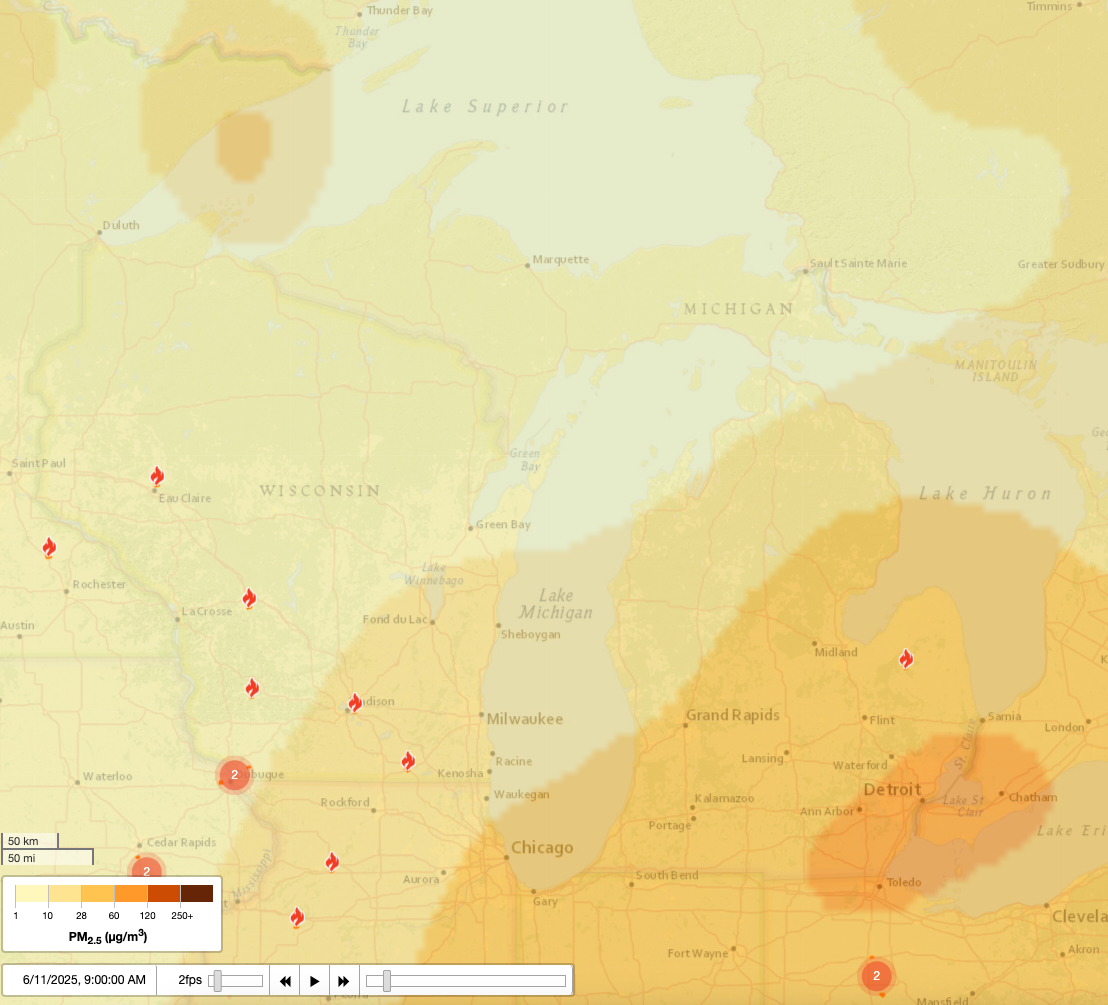

Despite average precipitation since March 1, a swath west of Michigan’s Thumb is experiencing moderate-severe drought conditions.
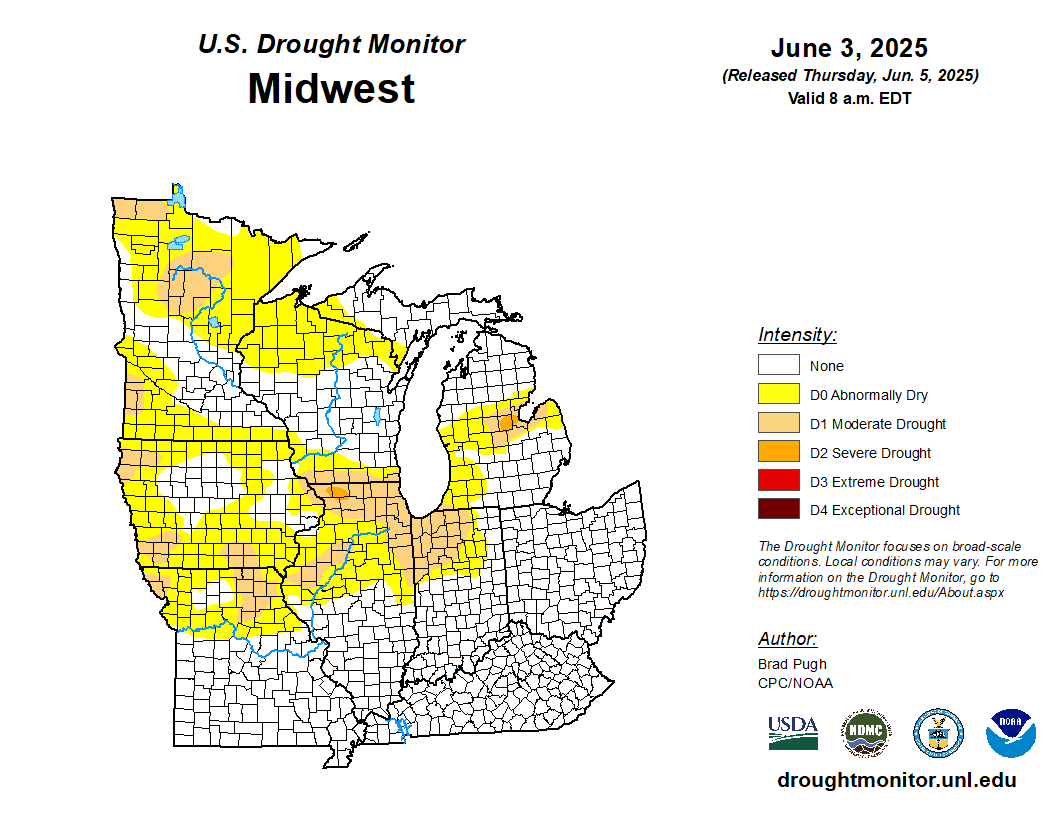
Accumulated GDD50 are around 250 in the Upper Peninsula and approaching 650 in southern Michigan. GDD 50 are near the long-term average across most of state.
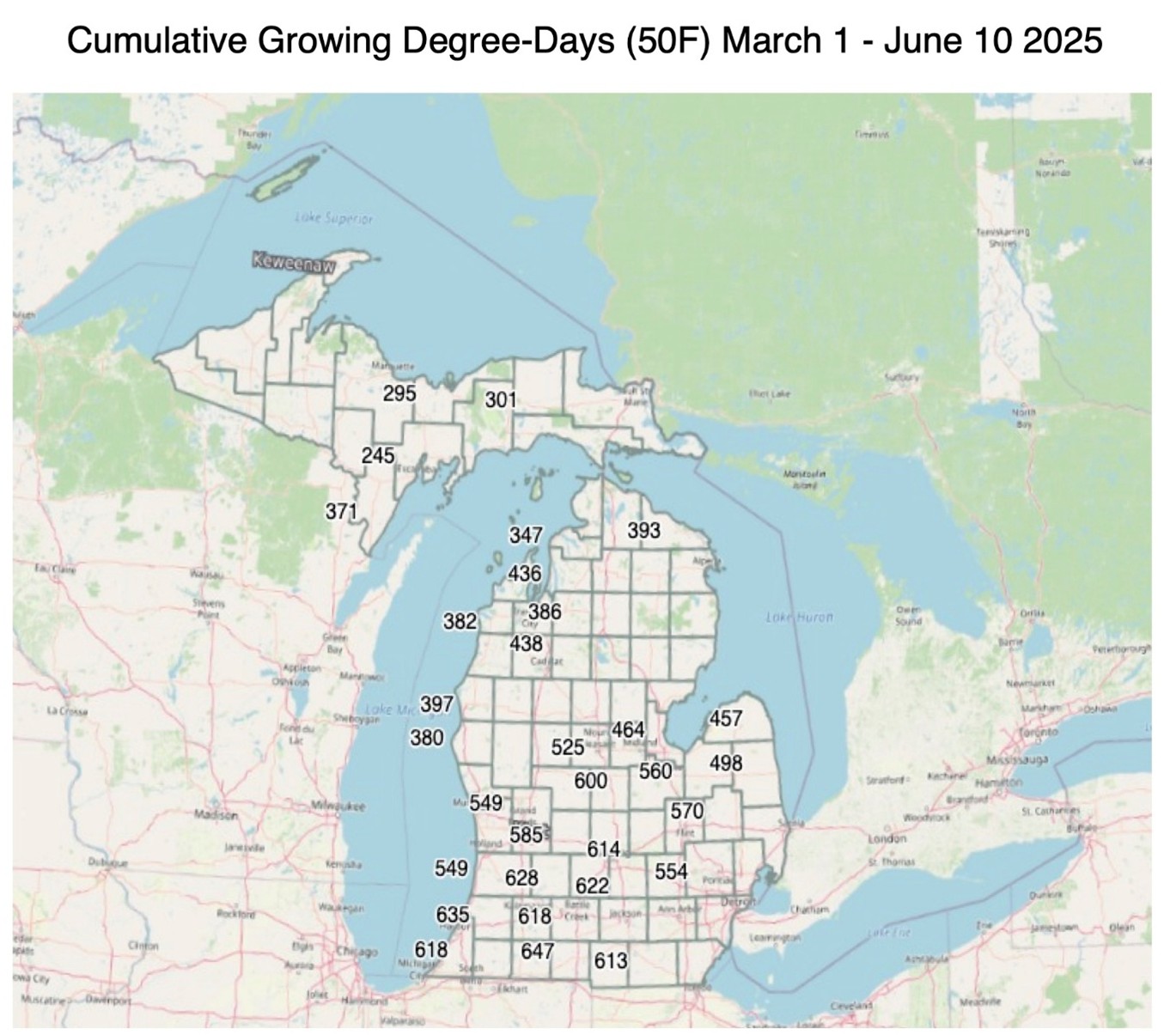
Looking ahead
Scattered showers are possible Friday and Saturday, with fair and dry conditions expected Sunday into early next week. Temperatures will be in the 70s this weekend and warmer as the week progresses. Medium range guidance suggests warmer than normal temperatures and above normal precipitation June 16-20, 2025. From June 11-18, 2025 most areas of the state will receive some precipitation. The forecast suggests anywhere from 0.5-1.25. inches depending upon location.

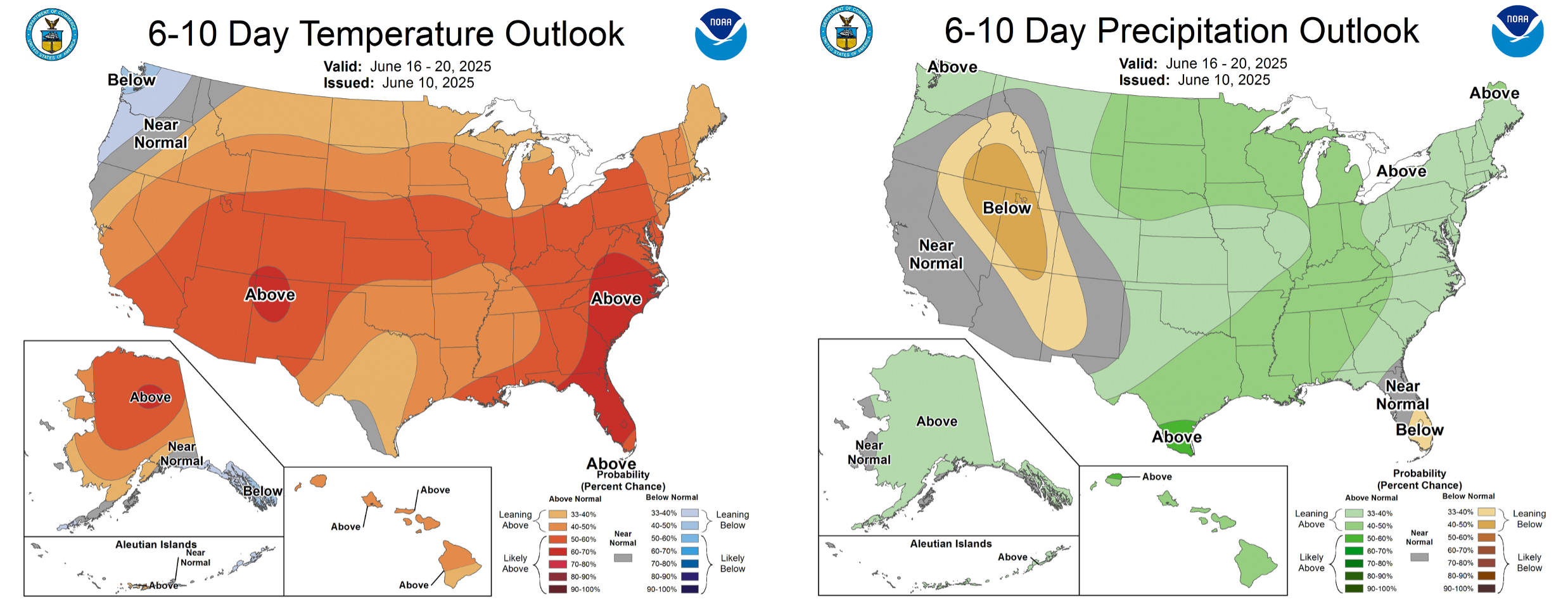
For the most recent Michigan State University agriculture weather forecast, visit: MSU Extension Agriculture Weather.
Stage of production/physiology
Hops across Michigan are in Principal Growth Stage 1: Leaf Development (from re-growth after burn back) and entering Growth Stage 2: Formation of Side Shoots and 3: Elongation of Bines depending upon growing location.

In the field
Plants have been trained across the state and are in the vegetative growth stage. Precipitation is near normal for this time of year and very similar to 2024. Accumulated growing degree days (base 50 F) are also close to normal for this time of year, but behind 2024. Growers are actively scouting, fertigating, applying plant protection products, side disking and will be burning off the lower 3 feet of leaves if they have not already. Most hops are 8-12 feet depending on growing location. Hops further north are 5 feet, while some fast-growing cultivars are nearly at the wire in southeast Michigan.
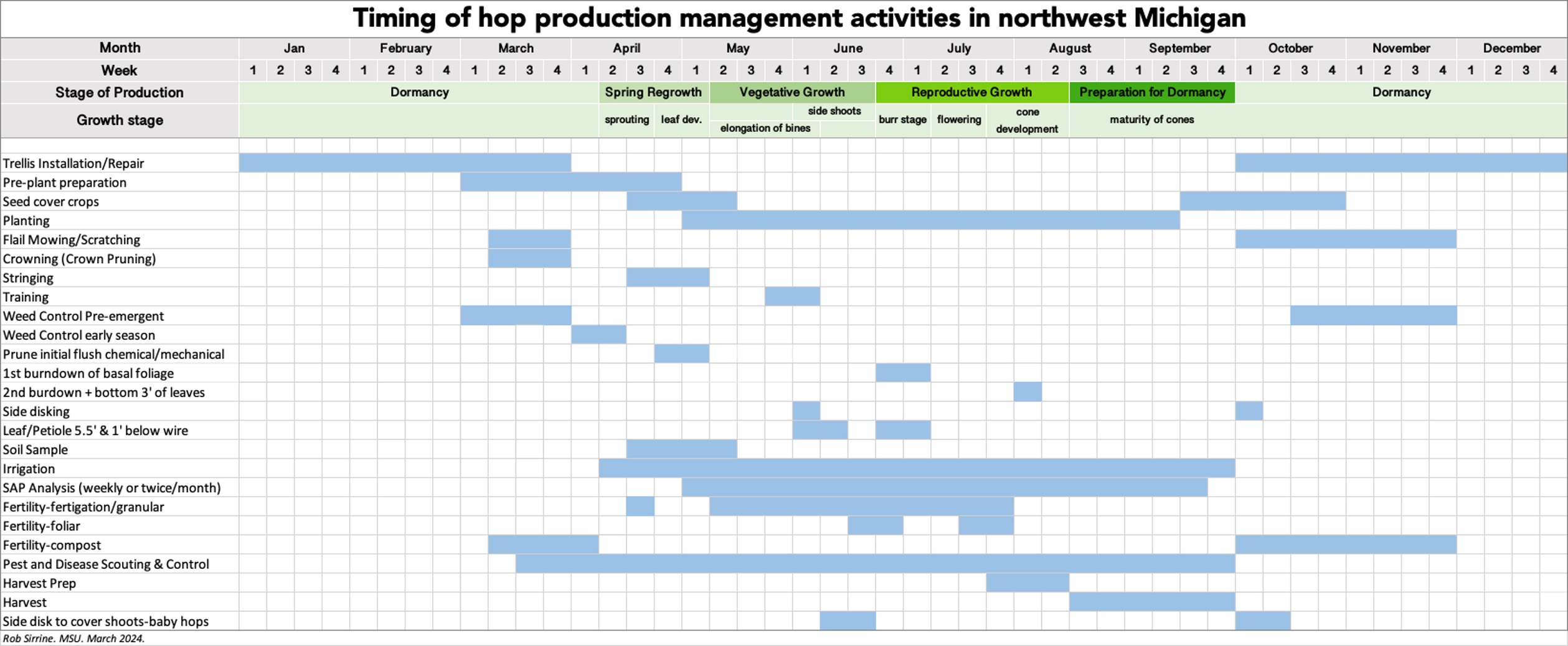
For pest information, please see the June 12, 2025 Hop Pest Report.
Sincere thanks to the Michigan hop producers who provided timely input for the Michigan Hop Crop Report.
Stay connected!
For more information on hop production practices, please sign up for the hop MSU Extension Newsletter, the free MSU Hop Chat Series and continue to visit Michigan State University Extension’s Hops webpage or the MSU Hops News Facebook.
If you are unsure of what is causing symptoms in the field, you can submit a sample to MSU Plant & Pest Diagnostics. Visit the webpage for specific information about how to collect, package, ship and image plant samples for diagnosis. If you have any doubt about what or how to collect a good sample, please contact the lab at 517-432-0988 or pestid@msu.edu.
Become a licensed pesticide applicator
All growers utilizing pesticide can benefit from getting their license, even if not legally required. Understanding pesticides and the associated regulations can help growers protect themselves, others, and the environment. Michigan pesticide applicator licenses are administered by the Michigan Department of Agriculture and Rural Development. You can read all about the process by visiting the Pesticide FAQ webpage. Michigan State University offers a number of resources to assist people pursuing their license, including an online study/continuing ed course and study manuals.
This work is supported by the Crop Protection and Pest Management Program [grant no 2024-70006-43569] from the USDA National Institute of Food and Agriculture. Any opinions, findings, conclusions, or recommendations expressed in this publication are those of the author(s) and do not necessarily reflect the view of the U.S. Department of Agriculture.



 Print
Print Email
Email